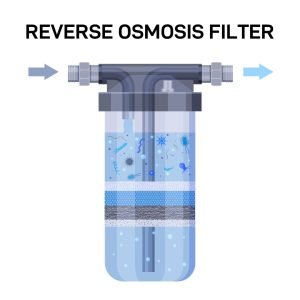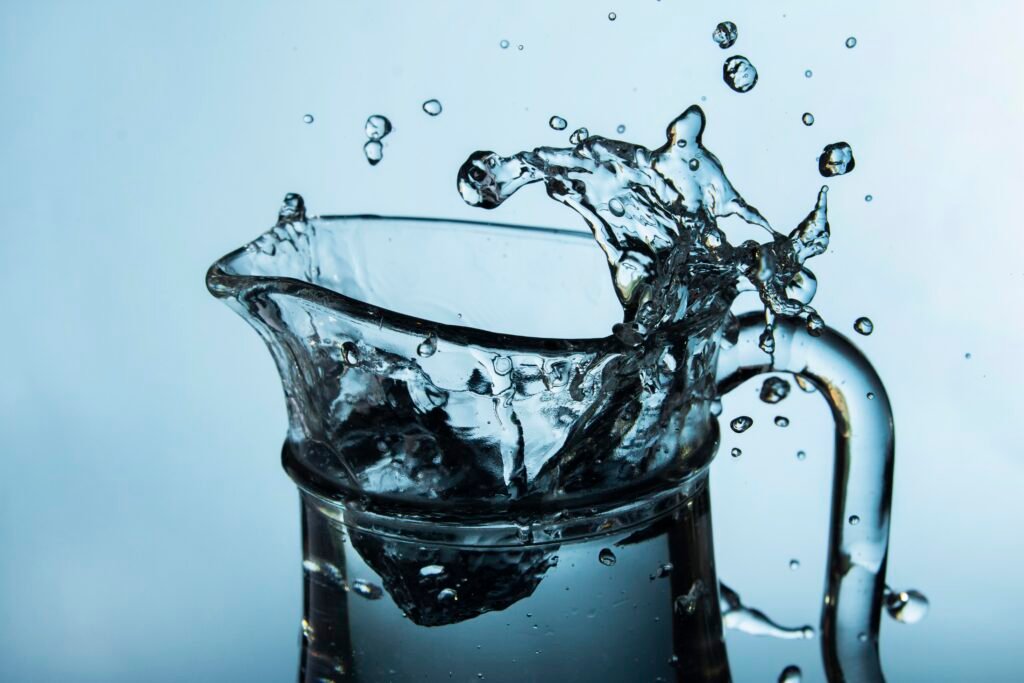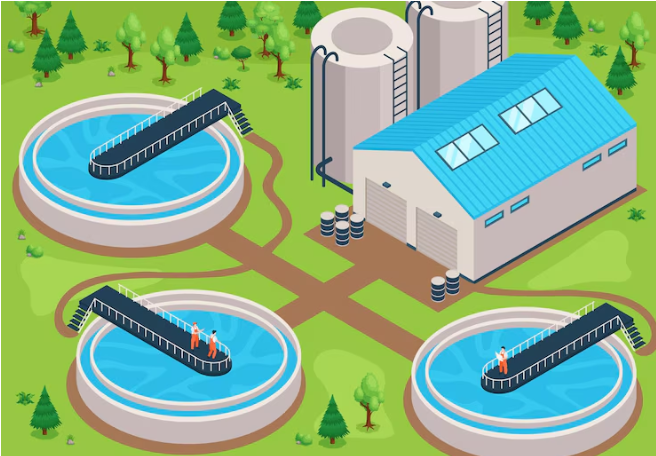Understanding Reverse Osmosis Water Filters

Source of image Freepik
Introduction
To be healthy, one requires access to clean, safe drinking water. With growing worries about water contamination, many households are installing advanced filtration systems to ensure the purity of their water. A reverse osmosis (RO) water filter is one of the most effective tools for purifying water. In this blog, we will delve into how an RO system functions, its advantages, and provide tips on selecting and maintaining one.
How Reverse Osmosis Works
A semipermeable film is utilized in the water decontamination procedure of invert osmosis to dispose of particles, particles, and greater particles. This process involves several stages.
1 Pre-filtration: Water first passes through a pre-filter to remove larger particles, sediment, and chlorine.
2 Reverse Osmosis: A semipermeable membrane is pushed through the water that has already been filtered. This membrane has tiny pores that allow water molecules to pass through while blocking contaminants such as lead, mercury, and pesticides.
3 Post-filtration: Finally, the water goes through a post-filter to remove any remaining impurities before it reaches the faucet.
Benefits of Reverse Osmosis Water Filters
Reverse osmosis water filters offer numerous benefits:
1 Effective Removal of Contaminants: RO systems are capable of eliminating up to 99% of pollutants, such as nitrates, chlorine, fluoride, and heavy metals.
2 Improved Taste and Odor: By removing chlorine and other chemicals, RO systems improve the taste and odor of drinking water.
3 Health Benefits: Clean water reduces the risk of waterborne diseases and exposure to harmful substances.
4 Cost-Effective: While the initial investment may be higher, RO systems can save money in the long run by reducing the need for bottled water.
Choosing the Right Reverse Osmosis System
The following aspects should be taken into account when choosing a RO system for your house:
Water Quality: To find out which particulate pollutants are in your water, test it.
System Capacity: A system with a larger capacity might be required for larger households.
Filter Efficiency: Look for systems with high efficiency ratings and certifications such as NSF/ANSI standards.
Installation and upkeep: Expert installation may be necessary for certain systems. Think about how simple it is to maintain and how readily replacement filters are available.
Maintenance Tips for Reverse Osmosis Systems
Your RO system’s lifetime and effectiveness depend on proper maintenance:
1 Regular Filter Replacement: Replace pre-filters, post-filters, and the RO membrane according to the manufacturer’s recommendations.
2 Sanitize the System: To stop bacterial growth, periodically sanitize the entire system.
Seek for any potential leaks: Regularly inspect the system for leaks or damage.
3 Monitor Water Quality: Conduct periodic water tests to ensure the system is functioning correctly.

Source of image Freepik
Comparing Reverse Osmosis with Other Filtration Methods
In the water purification technique of reverse osmosis, a semipermeable membrane eliminates ions, molecules, and bigger particles by filtering out ions, molecules, and bigger particles from the water. This process involves several stages.But for removing chlorine and improving taste, activated carbon filters are excellent. They, however, may not remove heavy metals or nitrates. UV purification is effective against bacteria and viruses, but it does not eliminate chemical contaminants.
Conclusion
You can ensure clean and safe drinking water for your family by investing in a reliable and effective reverse osmosis water filter system. By gaining an understanding of how these systems function, their benefits, and how to select and maintain them, you make an informed decision to safeguard your family’s health. A quality RO framework gives peace of intellect and a nonstop supply of unadulterated water.
FAQs on Understanding Reverse Osmosis Water Filters:
What is the Reverse osmosis process?
Through a semipermeable membrane, water is forced during the reverse osmosis (RO) process, filtering out contaminants such as salts, bacteria, and impurities. The membrane only allows clean water to pass, resulting in purified, drinkable water.
Does RO remove all contaminants?
RO removes many contaminants from the water, but it may not eliminate all volatile organic compounds (VOCs) or certain chemicals. Additional filtration stages can be added to enhance the purification process.
What is the disadvantage of reverse osmosis water?
Impediments of turn around osmosis water incorporate the evacuation of advantageous minerals, driving to water with a level of taste and potential need of basic minerals. RO systems also waste a significant amount of water and require regular maintenance.
What is Reverse Osmosis Water Filtration?
The semi-permeable membrane in the reverse osmosis water filtration process forces impurities out of the water as it is pushed through the membrane under high pressure, producing clean, purified water.



